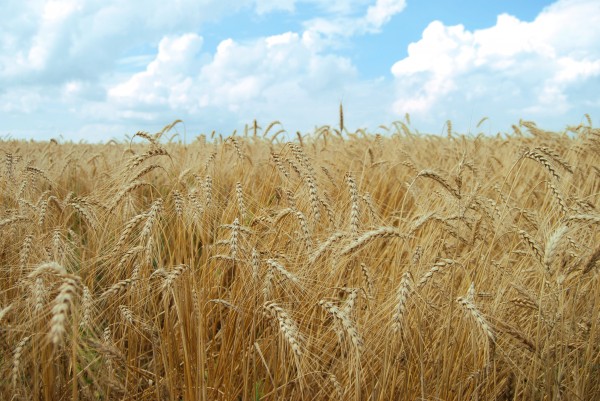The Truth About Grains and Gluten
The hype and the health facts behind the gluten-free movement.
Discover the world's top
health insurers.
Compare quotes with
a click of the button.
At first glance, “gluten-free” might seem like the new “cholesterol-free” – yet another way to buy your way into better health. Gluten-free mac ‘n’ cheese. Gluten-free pancakes. Gluten-free candy bars.
Time Magazine listed gluten-free as the top health fad of 2012. And why not? On average, gluten-free products cost about 242% more than their gluten-containing counterparts.
It would be easy to write the whole movement off as a fad. A fat cash grab for wheat peddlers.
Many influential publications are doing just that, not least of which being Harvard Health Publications, a health science publication that receives generous donations annually from some of the world’s biggest suppliers of wheat, including Nabisco, Kraft and General Mills.
It’s time we set the record straight about glutens and grain. What’s with all the hype? Should I go gluten-free? How do I know if I have a gluten allergy? What grains would I need to axe from my diet?
Let’s start with that first question.
A Brief History of Glutenous Grains
Gluten-free may seem to have appeared suddenly but it is the result of years and years of profit-mongering in the grain industry, under pressure to grow big fast and to produce more baked goods for a larger and larger population of people at a lower and lower price.
When your grandmother made bread, she used a dough starter – a ball of flour and water, bits of which may have been passed down from generation to generation.
Dough starters take natural yeast out of the air. The bubbles that cause this dough to rise were the product of gluten-eating yeast. Simply put, gluten was a tasty meal for the yeast in your grandmother’s dough. That yeast digested the gluten for us, this result of which was light and fluffy bread.
Fast forward to today. Grain has taken over the world. Not even your grandmother has time for baking anymore. We buy our bread from the grocery store; from big businesses under big pressure to produce profits. How do they produce more profits? Simple. By producing more grain faster.
Enter quick-rise yeast: a fast-acting bread starter that creates those lovely bubbles that make our bread all light and fluffy and full of gluten. Whoops.
Problem is, most of us don’t have the enzymes to process all that gluten. For a long time we had dough starter to do that for us. Dough starter, though, is labour-intensive and time-consuming, which means it is also profit consuming. So it’s bye-bye dough starter and hello quick-rise yeast.
Et voilà: the rise of the gluten overloaded world as we know it today.
Should I Go Gluten-Free?
A large percentage of the world’s population has some form of gluten intolerance.
(According to some research, as much as 81%). It’s especially common in people of Northern European origin, but new studies are showing gluten intolerance is also on the rise in Asia and the Middle East.
Often these intolerances are not major enough for a medical diagnosis as severe as celiac disease. Adding fuel to the fire is the fact that standard blood tests for gluten intolerance have about a 30% accuracy rate. This helps to explain all the controversy over the existence of gluten allergies..
Even a minor gluten intolerance can cause a lot of so-called minor symptoms far more debilitating than a little weight gain: allergic reactions like itchy rash or hives, nasal congestion and itchy eyes; headaches, migraines and irrational mood shifts; all manner of digestive problems including cramps, nausea, vomiting and diarrhea; fatigue after a meal or even chronic fatigue syndrome. Minor stuff, really. No biggie, right?
Making the Switch to Gluten-Free Grains
Gluten is everywhere, in everything. Anyone seriously committed to going gluten-free will soon discover this unhappy truth. It’s in your pizza, your submarine sandwiches, your pancakes, your morning oats and your high-fiber cereal.
Almost everything you eat in a restaurant has at least some gluten in it. Most of the processed foods at your grocery store contain it too. It’s in your soy sauce, your processed cheese, your hot dogs and your salad dressings.
However, cutting down on gluten doesn’t mean you need to pay 242% more for gluten-free products. That’s just clever marketing. You can cut out a lot of the gluten you eat daily just by cooking regularly with delicious gluten-free grains.
If you love pasta and can’t live without Tuesday night spaghetti dinner, try switching to brown rice pasta, which is naturally gluten free and chock full o’ fiber. While whole wheat may look like a healthy alternative, it is only a slight improvement on its processed counterpart.
If you love noodles in your evening soup, your everyday rice noodles are an excellent choice, even if they’re lacking a little in the fiber department. Keep in mind that most of the alternatives – egg noodles or soba noodles, for example – are cut with wheat flour, since it’s cheap and undetectable to the tongue.
If you love porridge you probably won’t have too much trouble adjusting to the gluten-free variety. No need to buy any expensive gluten-free branded products – just go for steel-cut oats and check the ingredients to verify they don’t contain any wheat.
Many interesting grains are popping up in local grocery stores. Proceed with caution. Spelt and Kamut, for example, are actually members of the wheat family. Barley and Rye also contain gluten.
Delight your palate by exploring the plethora of gluten-free grains that are available: millet, quinoa, wild rice or corn. Buckwheat also is a great choice, provided it’s not cut with any wheat, which it often is. Make a habit of reading the label.
It’s not a simple switch, to be sure. But consider this: our bodies aren’t really built for digesting gluten. We don’t have the enzymes for it. Remember those papier maché figurines you made in preschool? That’s what your intestines are doing with all that gluten.
Your ten-metre long intestines are fashioning a delightful coat of papier maché all over your insides. Does that sound like something you should be worried about?
Don’t get caught up in the gluten-free hype. What’s important is that you are aware of the delicious gluten-free grains that are commercially available. You’ll be doing both your body and your bank account a favour.
- 10 Tips On How to Travel Sustainably - April 23, 2024
- The Top 10 Scariest Illnesses and Diseases of all time - April 13, 2023
- 4 terrifying diseases you never want to get - December 21, 2022







Comments
Comments are disabled for this post